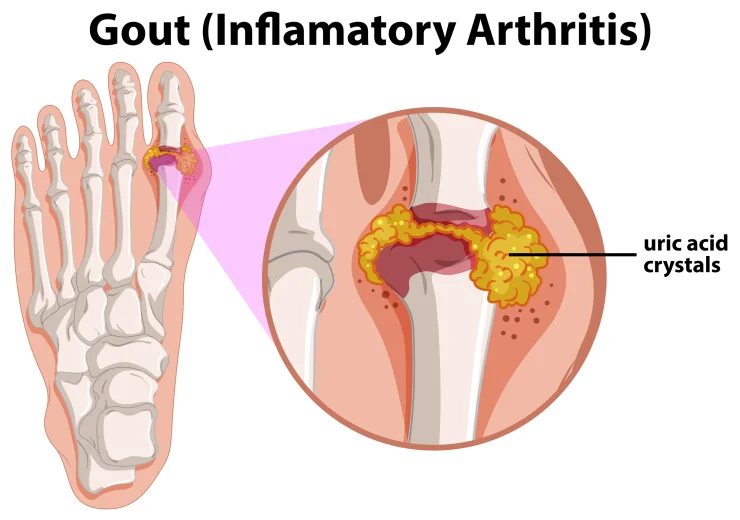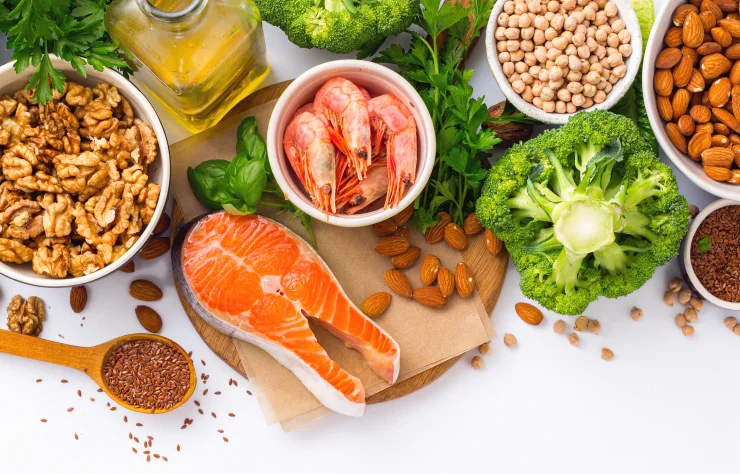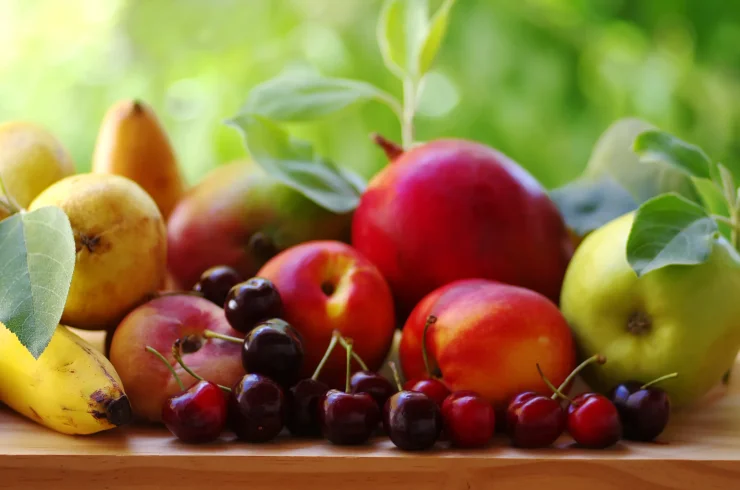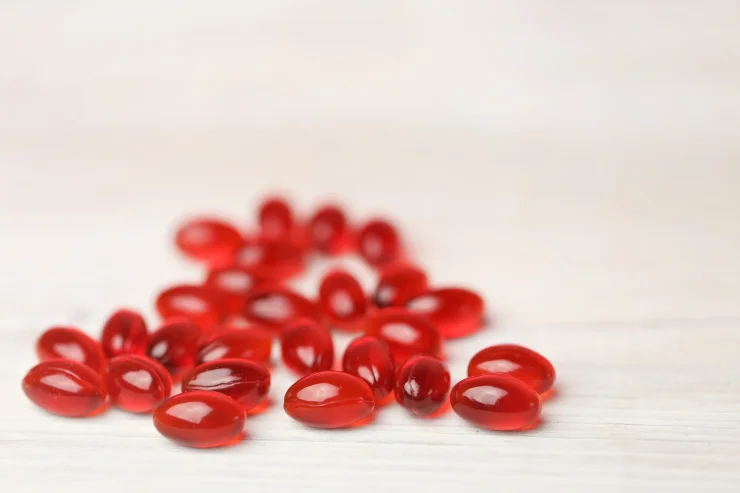Health
Gout Flare-Ups: Symptoms, Causes, & Natural Remedies
November 23, 2022
If you experience gout once, you’ll never forget it. The condition’s unmistakable burning pain and swelling is something that stays seared into your mind long after you’re feeling better.
But if you haven’t had gout, allow us to explain…
Gout is a series of conditions, usually in the feet, caused by a buildup of uric acid. It’s usually characterized by brutal pain in the joints of your feet, especially your big toe, and it’s not uncommon for people to describe gout as feeling like their foot is on fire.
As many as 8.3 million adults suffer from gout each year—around 3.9% of the US population (1). What many people don’t realize is that gout is largely an inflammation issue and that it’s often caused by an imbalance of omega-3s and omega-6s (2).
Today we’ll explain what causes gout, how to know whether you have it, and how to manage it naturally.
Table Of Contents
What Is Gout?
Gout is an arthritic condition caused by a buildup of uric acid in the body (3). Uric acid is a waste product in your blood that’s usually expelled from the body, but if it builds up, it can create sharp crystals that lead to joint inflammation (which negatively impacts the foot). You might experience symptoms like swelling, pain, tenderness to the touch, redness, warmth, and stiffness.

What Causes Gout Flare-Ups?
Gout is often caused by the food we eat. In fact, it usually has to do with a very specific set of ingredients in your food: omega-3 and omega-6 fatty acids.
These two polyunsaturated fats play an essential role in the body. And because your body doesn’t produce them naturally, you have to get them from food (4).
What to Know About Omega-3 & Omega-6 for Gout
The first thing you should know is that omega-3s and omega-6s don’t work the same way in the body.
Omega-3 is anti-inflammatory, while omega-6 is pro-inflammatory (5). (Don’t worry though…a small amount of inflammation in the body is actually a good thing! When inflammation is at a healthy amount and not chronic, it can help your body manage infections and injuries (6).)
So if you consume more omega-6s than omega-3s, you may run into excess inflammation that can cause issues like gout, or increase your risk for several other chronic diseases (7, 8).
Here are some of the most common sources of omega-3s and omega-6s:
- Omega 3s: fatty fish (mackerel and salmon), cod liver oil, oysters, oily fish (herring, sardines, and anchovies), caviar, eggs, chia seeds, flaxseeds, walnuts, and soybeans (9)
- Omega-6s: corn oil, soybean oil, sunflower oil, safflower oil, sesame, walnuts, egg yolk, oily fish, seafood, pork, and grain-fed beef (10)

As you can see, some of the most common foods in the average American diet are loaded with omega-6s. Whereas not nearly enough omega-3s are being consumed (11). So without even realizing it, you may be eating a diet that’s throwing off your entire omega-3-to-omega-6 ratio.
Ideal Omega-6-to-Omega-3 Ratio
Up until about 100 years ago, the omega-6-to-omega-3 ratio was around 4:1 or less. Now, that ratio has skyrocketed to a whopping 20:1 (12). Meaning, our population is eating way too many omega-6s (usually in the form of toxic seed oils like canola oil, sunflower, oil, safflower oil, etc.). It’s no wonder why autoimmune diseases and inflammatory conditions are on the rise (12, 13).
Luckily, it’s possible to correct this imbalance by…
- Subtracting seed oils from your diet: canola oil, sunflower, oil, safflower oil, etc.
- Adding more omega-3-rich foods and supplements to your diet: oily fish, eggs, chia seeds, flaxseeds, walnuts, eggs, avocados, and krill oil.
The ideal omega-6-to-omega-3 ratio that you want to hit is 2.5:1 and 5:1 (11).
Other Gout Triggers
In addition to an omega imbalance, there's a wide range of other potential gout triggers to consider…
- Certain Purine-Rich Foods: Purines are broken down into uric acid (a waste product in your blood). Not all purine-rich foods need to be avoided when you’re trying to dodge a gout attack, but some should be. That includes shellfish, mussels, sardines, and organ meats. You’ll also want to cut back on turkey, pork, and venison.
- Certain Medications (including aspirin, diuretics, and ACE inhibitors): Be sure to talk with your doctor before stopping any medication.
- Alcohol
- Sugary Drinks
- Dehydration
- Diabetes
- Joint Injury
- Stress
- Infections
- Excess Weight
What’s the Best Medicine for Gout?
The best way to start managing gout is to focus on what you put into your body. “Gout is the accumulation of monosodium urate crystals in the joints,” explains Kavanya Feustel, MD. “Flares are fueled by high serum urate or uric acid, so avoiding foods high in urate—or whose metabolites include urate—is essential to prevent recurrent flares.”
Research suggests that switching up your diet could help control symptoms of gout and reduce your risk of developing the condition (14). High-urate foods to avoid include organ meats and certain seafood. High-urate veggies, however, like asparagus, cauliflower, and kidney beans, won’t increase your gout risk and are fine to keep eating.
Next, focus on eating more foods that help reduce uric acid. This includes bananas, cherries, apples, coffee, and citrus (15). If you’re worried about your omega-6-to-omega-3 ratio, you can set your body on the right path by starting an anti-inflammatory diet, like the 30-Day NativeBody Reset.

It’s also important to cut back on drinking, as alcohol causes inflammation and increases your gout risk (16). “Alcohol is well known to be associated with both the long-term development of gout and is also associated with gout flare-ups,” explains rheumatologist Lynn Ludmer, MD, Medical Director of Rheumatology at Mercy Medical Center. “Prospective studies of men over a 12-year period showed a 2.5-fold increase in gout in those that drank more than 2 beers per day and 1.6 times the risk of developing gout in men who drank 2 or more hard liquor drinks per day. In addition, studies show patients are more likely to have a gout attack if drinking alcohol (especially beer) in the 24 hours prior to an attack. And that risk significantly increases with each drink.”
Because inflammation is the underlying culprit of gout, an anti-inflammatory supplement is key. Krill oil, a nutrient-packed extract derived from Antarctic krill, is a great way to curb inflammation and ensure you’re getting enough omega-3s to balance your ratio (17). It has also been linked to everything from lowered cholesterol and a lowered risk of dementia to improved hearing and dry eye symptoms. It even offers better health benefits than its more popular cousin, fish oil (18, 19).

If you want to reduce your risk of gout even more, add turmeric to your daily supplement regimen. This ancient spice contains curcumin—a powerful antioxidant known for its anti-inflammatory properties. Taking it daily (with an okay from your health practitioner) could add one more beneficial tool to your gout prevention toolbox (20).
The Bottom Line
If you experience gout, you’re not alone: it strikes millions of Americans each year. Reduce your risk of gout and manage the condition naturally with a balanced diet of omega-3s and omega-6s, and thoughtfully chosen supplements. Consider starting an anti-inflammatory diet like the 30-Day NativeBody Reset, which takes out the guesswork and offers guidance each step of the way. You can also lower your risk of gout by supplementing daily with Antarctic Krill Oil and Turmeric Curcumin with Black Seed Oil.
Frequently Asked Questions
Gout flare-ups can last anywhere from about 3 days with treatment, to up to two weeks without treatment. Going without treatment may increase your risk of joint damage and more flare-ups in the future.
Claire Hannum
Claire Hannum
Medical Disclaimer
This content is for informational and educational purposes only. It is not intended to provide medical advice or to take the place of such advice or treatment from a personal physician. All readers/viewers of this content are advised to consult their doctors or qualified health professionals regarding specific health questions. Neither Dr. Chad Walding nor the publisher of this content takes responsibility for possible health consequences of any person or persons reading or following the information in this educational content. All viewers of this content, especially those taking prescription or over-the-counter medications, should consult their physicians before beginning any nutrition, supplement, or lifestyle program.



